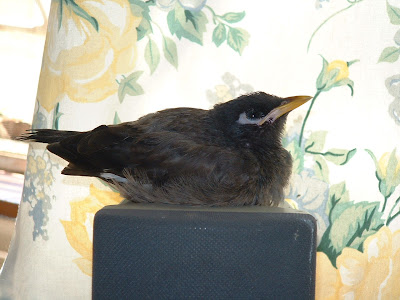My 15-year old 3-meter tall Pachypodium lamerei in the summer of 2005/2006. With fragrant frangipani-like flowers, this barrel-shaped tree exudes character.
My 15-year old Pachypodium lamerei (also known as the Madagascar Palm) suffered many a severe winter here in Tarlton, Gauteng, South Africa, to such an extent that it had been frosted down so many times that it eventually had 3 stems. Then in the Winter of 2006, it finally succumbed and died completely, much to my utter distress.
Pachypodium dead after the severe winter
It started off as a baby in a pot, being outside all summer long and brought into the house every winter. It got transplanted into a bigger pot every year until, finally, it was too big to bring into the house and I decided to plant it out in the garden in 2003. Every year it got bigger, rewarding me with those most beautiful white flowers every spring. I was truly devastated when that winter killed it.
Pachypodium flower
I'm not one for replacing plants that get killed by winter, but in January 2008 I broke down and got a new Pachy, and yes, he's in a pot and comes inside every winter! I'm a sucker for succulents, what can I say?!
October 2009 - next to my 'Old Man's Beard' cactus
He has grown in leaps and bounds over the past 4 years and will soon also have to get transplanted into a bigger pot and DON'T ask me what I'm going to do when he gets too big to be moved around, one step at a time!
Pachypodium lamerei has a tall, silvery-gray trunk covered with sharp 6.25 cm spines. Long, narrow leaves grow only at the top of the trunk, like a palm tree. It rarely branches. Plants grown outdoors will reach up to 6 metres. It has large thorns and leaves mostly just at the top of the plant. It is a stem succulent and comes from the island Madagascar and bears large, fragrant flowers. Blooming time is late spring to early summer.
This plant grows best in warm climates and full sun. It will not tolerate hard frosts, and will likely drop most of its leaves if exposed to even a light frost. It is easy to grow as a house plant, if you can provide the sunlight it needs. Use a fast-draining potting mix, such as a cactus mix and pot in a container with drainage holes to prevent root rot. Water sparingly and do not fertilize. Do not water in the winter months when there is no foliage, for this is what killed my Pachy.
Today Pachypodium consists of about 20 species; five are native to continental Africa and the rest to Madagascar. In Africa they are found in arid areas or in dry situations in Angola, Namibia, Botswana, Zimbabwe, Swaziland, Mozambique and South Africa (Northern Province, Gauteng, Mpumalanga, Free State, KwaZulu-Natal and Northern, Western and Eastern Cape).
Camera used: FujiFinepix 2800Zoom
.













































